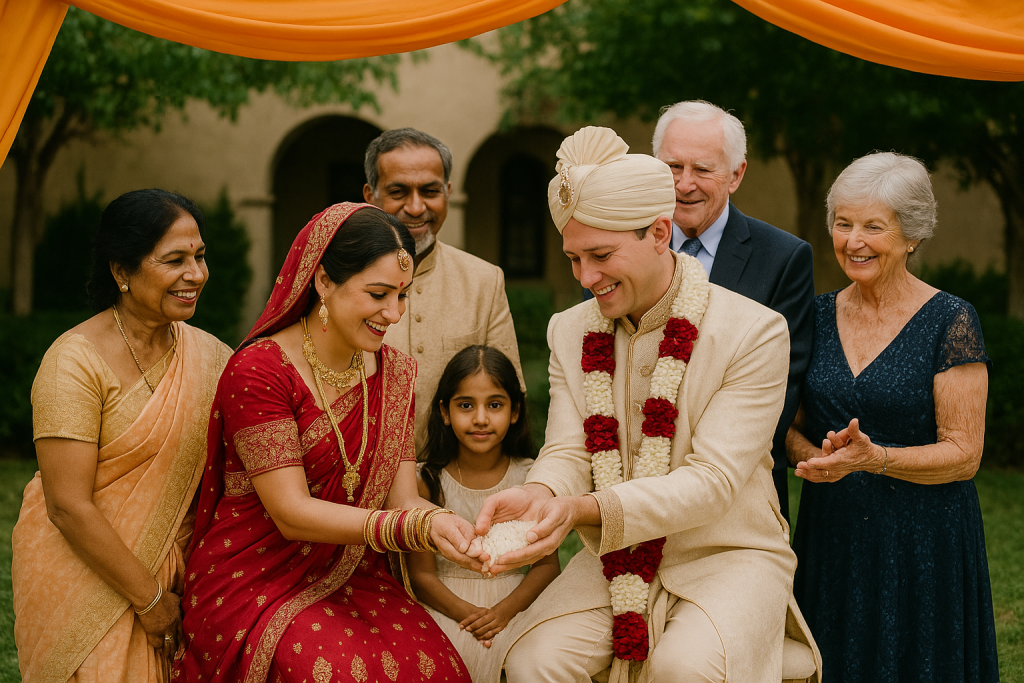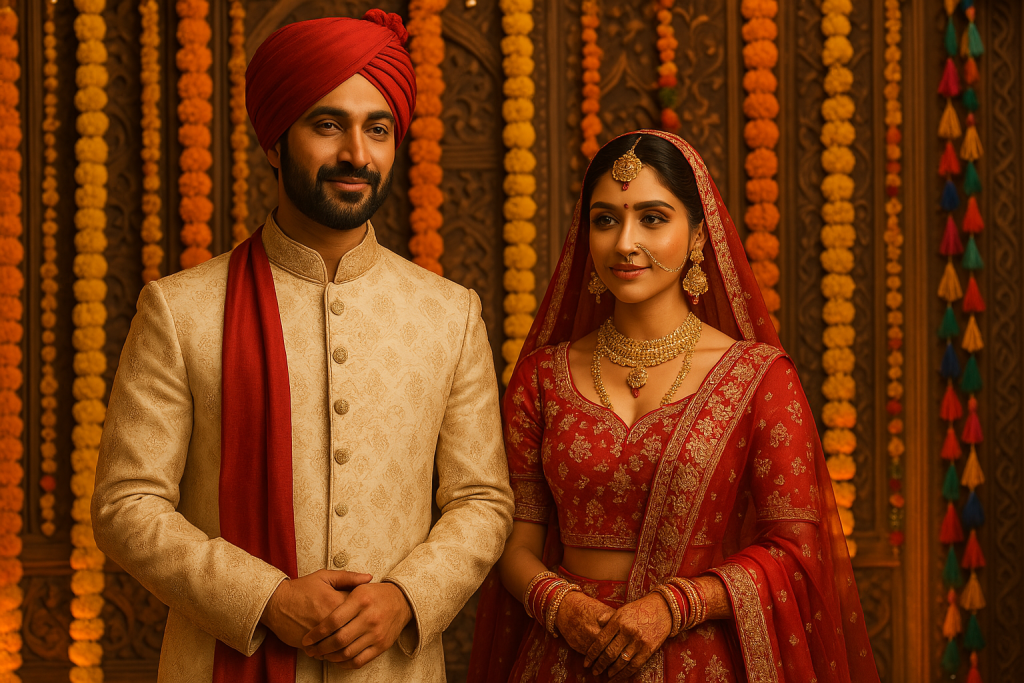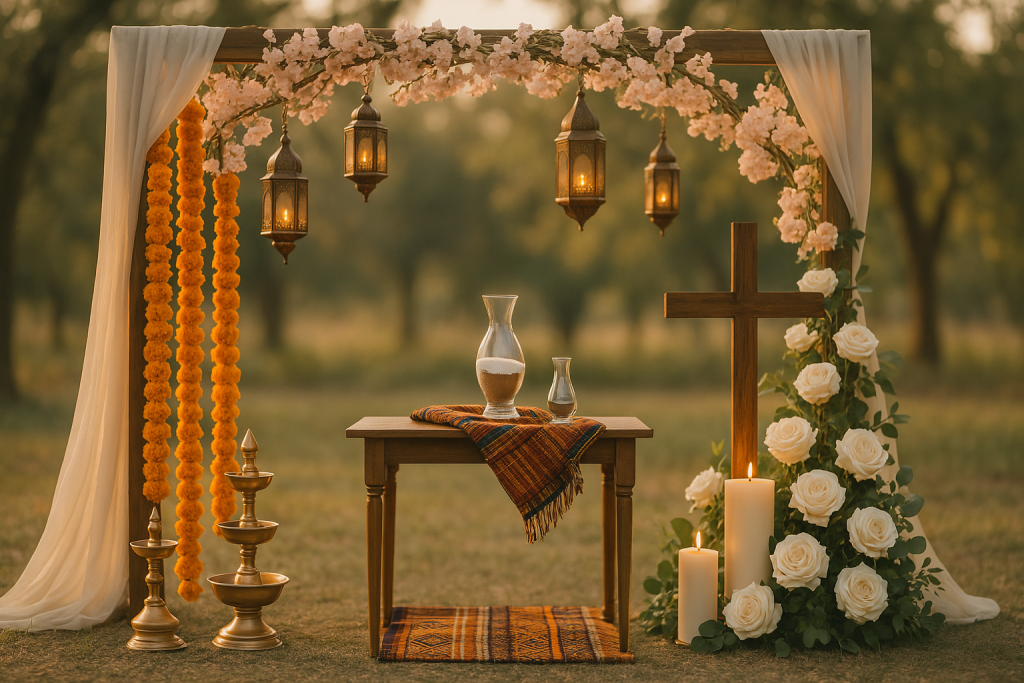In today’s diverse and inclusive wedding landscape, more couples are embracing their cultural roots and traditions when planning their special day. Whether it’s a vibrant Indian ceremony, a serene Chinese tea ritual, or a joyful Nigerian dance celebration, cultural and traditional weddings are more than just beautiful—they’re meaningful expressions of identity, legacy, and love.
This guide explores how couples in Canada can honour their heritage while creating a wedding that feels both personal and timeless.
Why Cultural Traditions Matter in Modern Weddings
Weddings are not just about the union of two people—they also bring families, communities, and generations together. Embracing cultural traditions

- Reinforces familial and community bonds
- Preserves heritage across generations
- Creates a sense of belonging and continuity
- Adds symbolic depth to rituals and ceremonies
Key Elements of Cultural & Traditional Weddings
Every culture has its unique customs, rituals, attire, music, and cuisine. Here’s how different elements shape the wedding experience.
Traditional wedding ceremonies often include sacred or symbolic rituals passed down through generations:
- Indian Weddings: The “Saptapadi” (seven steps) around the sacred fire
- Jewish Weddings: Breaking the glass under the chuppah
- Filipino Weddings: Coin, veil, and cord ceremonies
- Ghanaian Weddings: Customary knocking and dowry presentations
These rituals aren’t just ceremonial—they are expressions of cultural philosophy, faith, and shared values.
2. Traditional Attire
Wedding attire in cultural ceremonies often reflects regional craftsmanship and symbolism:
- Chinese brides in red cheongsam or qipao for luck and prosperity
- South Asian grooms in sherwanis or dhotis with embroidered stoles
- Indigenous couples wearing handwoven garments with beadwork
- Eastern European weddings featuring national costumes with embroidered patterns

3. Music & Dance
From Punjabi dhol beats to Middle Eastern dabke circles, music and dance bring rhythm, unity, and joy to the wedding experience.
- Irish weddings may include live fiddle and flute performances
- Caribbean weddings bring energy through calypso and steelpan bands
- Greek weddings feature traditional dances like the Kalamatianos
Encouraging family and guests to join creates a celebratory and communal spirit.
4. Cultural Cuisine
Food plays a central role in nearly all cultural weddings. It’s not just a meal—it’s a gesture of hospitality, tradition, and storytelling.
- Persian weddings may include a “Sofreh Aghd” table and lavish rice dishes
- Italian weddings feature multi-course meals with wine pairings
- Vietnamese weddings offer family-style spreads with symbolic ingredients
- Moroccan weddings are known for aromatic tagines and sweets like baklava
Expand on this under Food, Drinks & Catering
Blending Cultures in Fusion Weddings
Canada’s multicultural fabric has led to a rise in fusion weddings, where couples from different cultural backgrounds celebrate both heritages.

Tips for Planning a Fusion Wedding:
- Start with open, respectful conversations with families about core traditions
- Incorporate key rituals from both cultures into the ceremony and reception
- Use décor, fashion, and music that respectfully blend themes and aesthetics
- Consider having two mini ceremonies or a joint multicultural celebration
Working with Vendors Who Understand Your Vision
When planning a cultural wedding, your vendor team should understand and respect your traditions. Look for:
- Photographers experienced in cultural weddings who can capture meaningful moments
- Caterers familiar with traditional cuisine preparation and service
- Decorators who can source authentic materials, fabrics, and religious symbols
Find professionals in Vendor Spotlights & Guides
Common Planning Challenges (and How to Solve Them)
1. Managing Cultural Expectations
Balancing modern choices with family traditions can be delicate. Be transparent with your elders while gently asserting your preferences. A blended ceremony script often helps bridge expectations.
2. Language & Translation
If your guests speak multiple languages, consider bilingual invitations, signage, and ceremony narrations.
3. Sourcing Cultural Elements
Some traditional items may be hard to find locally. Consider online specialty shops or consult community groups and cultural organizations in your city.
Conclusion: Honour, Blend, and Celebrate
Planning a cultural and traditional wedding is a beautiful way to honour your roots while stepping into a shared future. Whether you fully embrace one heritage or blend multiple, the key is to lead with intention, respect, and love.
Your wedding is your story—let it speak through the colours, sounds, and traditions of where you come from.
For more inspiration and real-world planning tips, browse our sections on Wedding Planning & Tips and Real Weddings & Success Stories.